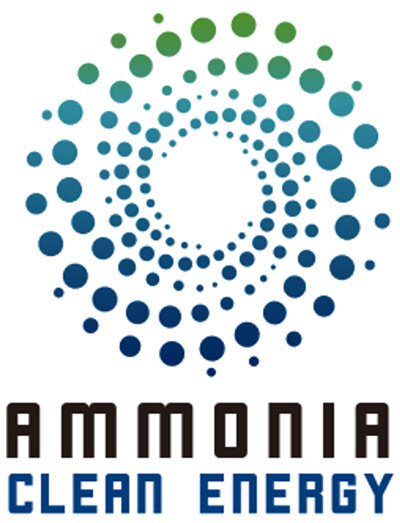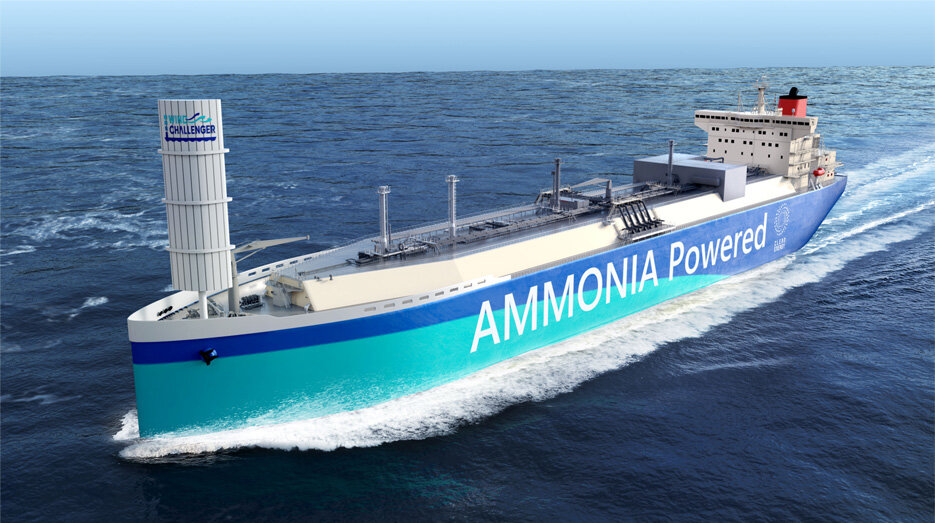- JP
- EN
MOL, Namura Shipbuilding, Mitsubishi Shipbuilding Acquire AiP for Large Ammonia-powered Ammonia Carrier
- Major Step toward Enhanced Ammonia Transport Capacity -
March 14, 2025
TOKYO-Mitsui O.S.K. Lines, Ltd. (MOL; President & CEO: Takeshi Hashimoto) today announced that a large-size ammonia-powered ammonia carrier, under joint development by MOL, Namura Shipbuilding Co., Ltd. and Mitsubishi Shipbuilding Co., Ltd. since 2021 (Note 1), has received Nippon Kaiji Kyokai (ClassNK) approval in principle (AiP (Note 2)) for its ammonia fuel compatible design.


The companies are developing the vessel in anticipation of wide use of ammonia as a zero-carbon fuel and hydrogen carrier, and in response to further demand for ammonia fuel transitions in power plants. The carrier features larger cargo tanks than very large gas carriers (VLGCs) and very large ammonia carriers (VLACs), enabling low-emission transport and higher cargo capacity, while also using ammonia as fuel. In particular, it is a groundbreaking vessel in that it meets the restrictions on entry into major power plants in Japan, while maintaining specifications consistent with current VLGCs in terms of connections to power plants and ammonia supply terminals during loading and discharging.
ClassNK reviewed the basic plans and results of the hazard identification study (HAZID (Note 3)), reflecting in the basic design. This allows for the completion of the detailed design. In HAZID, the safety of ammonia toxicity, which is a major concern, was studied and evaluated as a top priority, and sufficient countermeasures have been implemented in the design.
The MOL Group aims to achieve net zero greenhouse gas (GHG) emissions by 2050, and will continue to work toward the realization of a decarbonized, low-carbon society in line with BLUE ACTION 2035 and MOL Group Environmental Vision 2.2. The group aims to realize a sustainable society as an infrastructure company that supplies clean energy in addition to introducing clean alternative fuels.
(Note 1) Please refer to the previous press release.
November 4, 2021: MOL to Start Development of Large-size Ammonia Carrier Powered by Ammonia Fuel
(Note 2) Approval in Principle (AiP):
Approval in principle (AiP) is granted based on risk assessments conducted by experts in new technologies or areas where existing regulations lack specific details. This certification indicates the completion of a feasibility study on a basic design that incorporates this technology and concept, ensuring a smooth transition to a detailed design.
In this case, the assessment was not limited to a feasibility study; the detailed design was completed based on the basic design.
(Note 3) Hazard Identification Study (HAZID)
A risk assessment and management method in which experts discuss the magnitude and frequency of potential system hazards to ensure the overall safety of a system.
MOL Group 5 Sustainability Issues
MOL Group identifies "Sustainability Issues" (Materiality) as our key issues for sustainable growth with society through realization of the Group Vision.
We anticipate this initiative to contribute especially to the realization of "Safety & Value -Provide added value through safe transportation and our social infrastructure business-", "Environment -Conservation for Marine and global environment-" and "Innovation -Innovation for development in marine technology-."

